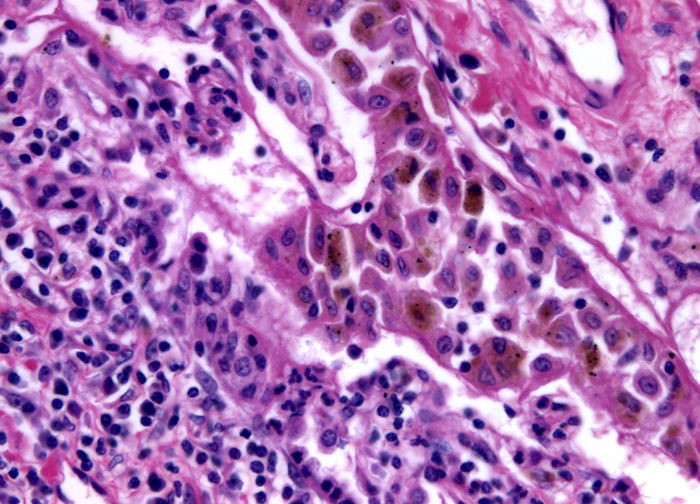
Bronchogenic Carcinoma at 20x Magnification
Bronchogenic carcinomas are usually classified into two basic groups: non-small cell carcinomas and small cell carcinomas (sometimes called oat cell carcinomas). Of the two, small carcinomas, which account for about 20 to 25 percent of all cases, are the most aggressive. Rarely do these types of tumors ever appear in individuals who have never been smokers. Non-small cell carcinomas tend to spread more slowly and are usually further classified into three distinct types of tumors: squamous cell carcinomas, adenocarcinomas, and large cell carcinomas. The squamous variety of the disease tends to remain localized for longer periods of time than other types of lung cancer and, consequently, is often easier to treat successfully. Most common in the United States, however, is adenocarcinoma, which has usually invaded nearby tissues or metastasized by the time it is recognized. Large cell carcinomas only account for approximately one-tenth of all cases of bronchogenic carcinoma, but the cancer has a propensity to grow more rapidly than other types of non-small cell carcinomas.













